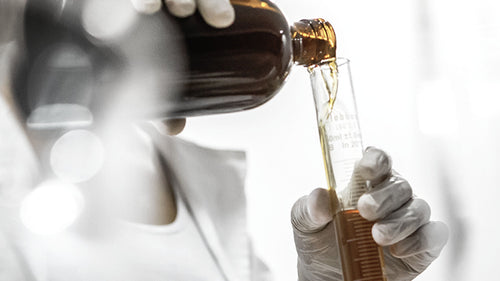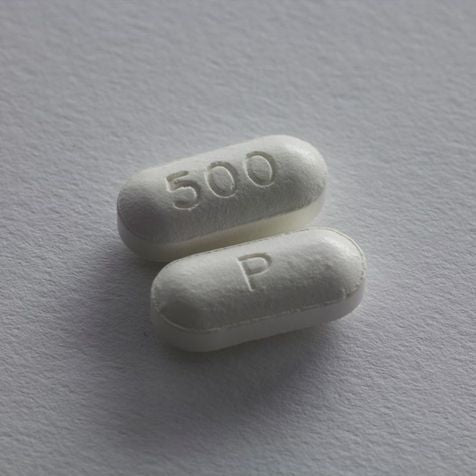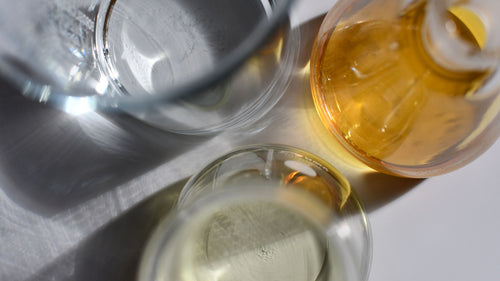PRENUMERERA & SPARA 20%
FRI FRAKT
Kommer du ihåg ditt lösenord?
Subscribe to receive a guaranteed shipment of formula every month.
Enjoy a {{ discount_amount }} discount on product throughout your subscription.
Change or cancel your subscription at any time!


Varje aktiv ingrediens har i likhet med ett läkemedel ett optimalt dosintervall. Dosintervall avser den koncentration av ingrediensen som rekommenderas att användas och är baserad på produktens verkningstid i eller på kroppen. Ett perfekt exempel som vi alla kan relatera till är läkemedlet mot värk och feber - paracetamol. Om du tar en halv tablett påverkar du inte din huvudvärk men om du tar mer än den föreskrivna dosen på 2 tabletter riskerar du att få biverkningar av läkemedlet. Liknande rekommendationer finns för aktiva ingredienser i hudvård. Vad vore då poängen med att ta en högre koncentration än de rekommenderade dosintervallet?




Retinol (Vitamin A): En allmänt erkänd receptfri form av vitamin A, känd för att främja kollagenproduktionen i huden och minska tecken på fina linjer och rynkor. Även verksam mot akne genom att rensa porerna och minska inflammation.
Vitamin C (askorbinsyra): Känd för sina antioxidantiva egenskaper som hjälper till att skydda huden från miljöpåfrestningar och kan också hjälpa till att ljusna upp hyn samt främja hudens kollagenproduktion.
Niacinamid (Vitamin B3): Är en form av Vitamin B3, känd för att reducera talgproduktionen, lätta upp mörka fläckar (hyperpigmentering) och stärka hudens barriärfunktion.
AHA-syror (Alpha Hydroxy Acids): Dessa är en grupp vattenlösliga syror som genom sin exfolierande effekt på hudens yta är kända för att bidra till jämnare hudtextur och jämna ut hudton. En vanligt förekommande AHA-syra är exempelvis Glykolsyra.


Koncentrationen av aktiva ingredienser i hudvårdsprodukter spelar en avgörande roll eftersom det kan påverka produktens effektivitet och risken för potentiella hudirritationer. Idealiska koncentrationer kan dock variera beroende på den specifika ingrediensen, formuleringen och individuella hudkänsligheter.
Retinol (Vitamin A): Effektiva koncentrationer varierar vanligtvis från 0,05%-0,3%. Högre koncentrationer ökar risken för hudirritation.
Vitamin C (askorbinsyra): Effektiva koncentrationer kan variera mellan 0,5–5%. Högre koncentrationer kan öka risken för irritation.
Niacinamid (Vitamin B3): Niacinamid är effektivt i koncentrationer mellan 2–4%. Högre koncentrationer kan öka risken för klåda och rodnad.
AHA-syror (Alpha Hydroxy Acids): Effektiva koncentrationer varierar från 1–8% för glykolsyra vid daglig användning. För höga koncentrationer kan öka risken för rodnad, brännande känsla och stickningar i huden. Vid för höga koncentrationer och för ofta använt, kan syrabehandlingar också öka risken för solskador.
Tanken att högra koncentrationer av en ingrediens i hudvård är lika med bättre resultat är en vanligt förekommande marknadsföringstaktik, men det är inte allmänt sant. Effektiviteten av en hudvårdsprodukt beror ofta på flera faktorer:
Effektplatå: Många aktiva ingredienser har en koncentrationströskel efter vilken det inte finns någon extra fördel. Till exempel kan salicylsyra i koncentrationer över 2% inte ge signifikant ökade fördelar för akne men kan öka risken för hudirritation.
Ökad risk för irritation: Högre koncentrationer kan leda till ökad risk för hudirritation och känslighet. Till exempel, medan en högre koncentration av retinol kan ge snabbare resultat när det gäller anti-aging fördelar, kan det också öka sannolikheten för hudrodnad, torrhet och fjällning.
Stabilitet och penetration: Vissa ingredienser, som Vitamin C och retinol, kan vara instabila vid högre koncentrationer eller kanske inte penetrera huden lika effektivt om de inte formuleras på rätt sätt.
Optimala koncentrationer: Alla ingredienser behöver inte ha en hög koncentration för att vara effektiva. Vissa kanske fungerar bäst vid lägre procentsatser, till exempel retinol.
Personlig tolerans: Allas hud är olika. Vissa människor kan tolerera höga koncentrationer av aktiva ämnen utan problem, medan andra kan uppleva irritation även vid lägre koncentrationer. I hudvårdsvärlden är ”mer” inte alltid ”bättre”. Det handlar om att hitta rätt balans och rätt produkter anpassade efter individuella behov.


Ett forskarlag från Manchester utförde 2022 en jämförande klinisk studie där olika koncentrationer av retinol serum testades på deltagare med mogen hudtyp. Koncentrationerna som testades var 0,1%, 0,3% och 0,5% retinol. I studien fann de att högre koncentration inte alltid ger bättre resultat.
De deltagare som använde retinol serum med 0,5% drabbades av betydligt fler biverkningar jämfört med dem som använde 0,3% och 0,1%. Efter 8 till 12 veckor visade studien tydligt att de testdeltagare som använt 0,3% och 0,5% koncentrationer visade en större biverkningsprofil där biverkningarna med 0,5% retinol var mest utmärkande.
I en studie från forskargrupper från Serbien och Tyskland jämfördes insmörjning av kräm med 2% Glykolsyra och 10% glykolsyra. Man såg då att den högre koncentrationen av glykolsyra på 10% avdödade en viktig hudbakterie, S Epidermidis, vilket leder till ett mikrobiom i obalans.
Med Skinomes produkter garanterar vi att du får en säker produkt som tar hänsyn till rekommenderat dosintervall samt att våra aktiva ingredienser behåller sin effekt under hela hållbarhetstiden. Därför ser vi till att omedelbart kyla våra produkter efter produktion och rekommenderar att du som kund förvarar produkterna i ditt kylskåp för maximal effekt. Detta säkerställer att din hud får den koncentrationen av aktiva ingredienser som ger bäst resultat och leder till en hälsosam hud.
Milica Lukic, Mila Filipovic, Nevena Pajic, Dominique Lunter, Dragana Bozic, S. S. (2021). Formulation of topical acidic products and acidification of the skin - Contribution of glycolic acid. Int J Cosmet Sci.
Kieran T Mellody 1 2, Eleanor J Bradley 3, Bezaleel Mambwe 1, Lindsay F Cotterell 1 2, Orsolya Kiss 1 2, Poonam Halai 1 2, Zeena Loftus 3, Mike Bell 3, Tamara W Griffiths 1 2, Christopher E M Griffiths 1 2 4, R. E. B. W. 1 2 4. (2022). Multifaceted amelioration of cutaneous photoageing by (0.3%) retinol. Int J Cosmet Sci .
Malwina Zasada, Elzbieta Budzisz, A. E.-P. (2020). A Clinical Anti-Ageing Comparative Study of 0.3 and 0.5% Retinol Serums: A Clinically Controlled Trial. Skin Pharmacol Physiol.